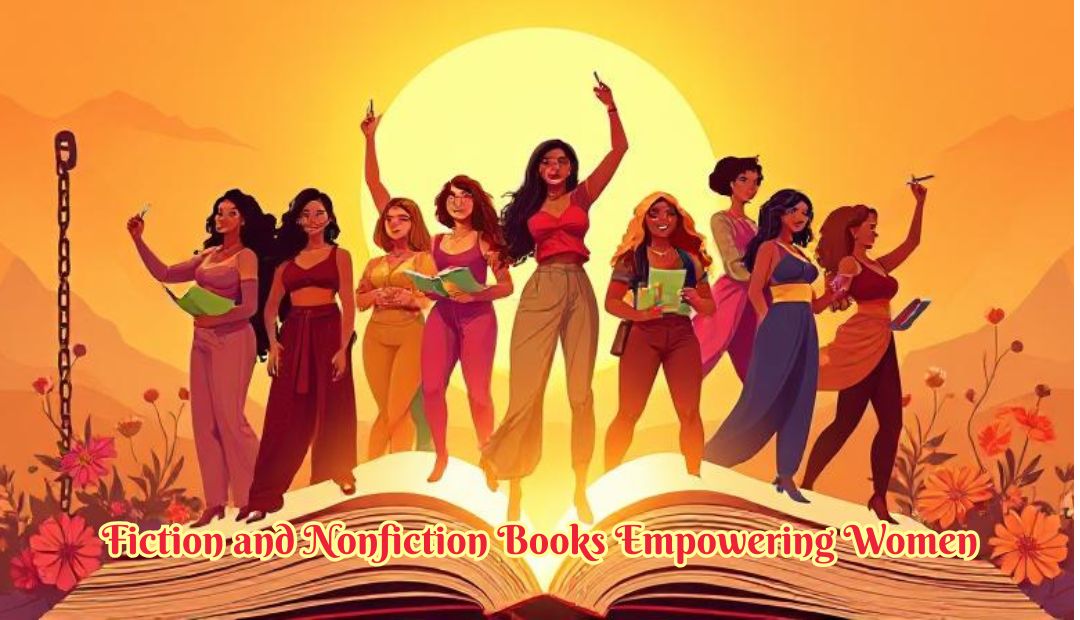
Empowerment Fiction and Nonfiction: Exploring Fiction Books About Women Empowerment
Introduction
Women’s empowerment in literature is more than a theme—it is a movement. Across history, stories have served as vessels of courage, resilience, and transformation, helping women challenge stereotypes and claim their voices. Both empowerment fiction and nonfiction play a pivotal role in shaping how readers—women and men alike—understand gender equality, self-determination, and personal power.
Where nonfiction draws from lived experience to provide practical lessons and role models, fiction creates imaginative worlds where women reclaim identity, fight injustice, and showcase resilience. Together, these genres present a dynamic lens through which empowerment can be understood and embraced.
Empowerment Fiction and Nonfiction as Tools for Change
At its core, empowerment fiction and nonfiction give women agency on the page—and inspire it in life.
- Fiction uses emotional storytelling to build empathy and spark change. Through strong female leads, complex struggles, and symbolic journeys, it shows readers how women navigate oppression, leadership, and identity.
- Nonfiction offers the factual, lived narratives of women who have challenged systems and survived adversity. Whether through memoirs, essays, or personal defense guides, these works provide actionable models for resilience.
The synergy between the two is powerful: fiction engages the imagination, while nonfiction validates those truths with lived reality. Both influence cultural perceptions of women’s roles in society and inspire readers to advocate for change.
Fiction Women Empowerment Books and the Power of Storytelling
Fiction women empowerment books show us what happens when female characters rise above adversity. The power lies not just in the plot, but in how stories are told.
Narrative techniques such as symbolism, allegory, and character-driven storytelling immerse readers in the psychological and emotional experience of empowerment. For example, a female protagonist who defies societal norms to claim leadership does more than entertain—it validates the struggles of countless real women facing systemic barriers.
These stories don’t just highlight resilience—they normalize it. By showcasing independence, leadership, and self-defense, fiction empowers readers to internalize those same qualities.
Fiction Books About Female Empowerment and Identity
Identity is central to empowerment. Fiction books about female empowerment often explore journeys of self-discovery where characters confront—and eventually dismantle—limiting beliefs imposed by society.
Such stories reveal the transformative arc of women who start in the margins but reclaim their voices through courage, education, or solidarity with others. These fictional narratives encourage readers to ask themselves: How can I reclaim my own identity in the face of cultural or structural limitations?
By portraying characters who balance vulnerability with strength, these books remind us that empowerment is not about perfection—it is about persistence.
Female Empowerment Books Fiction vs. Real-Life Nonfiction Narratives
A meaningful comparison exists between female empowerment books fiction and nonfiction.
- Fiction allows readers to embark on imaginative journeys—symbolic battles, reimagined histories, and characters who rewrite the rules of power. It is emotional and universal, offering lessons that transcend specific experiences.
- Nonfiction, especially memoirs, autobiographies, and guides, grounds empowerment in reality. These narratives give voice to women who have faced violence, discrimination, or systemic barriers, and triumphed.
Consider the work of Paxton Quigley, whose bestselling nonfiction books like Armed & Female and Not an Easy Target have taught more than 7,000 women practical self-defense. Her work exemplifies how nonfiction empowers by providing tools and knowledge that can literally save lives. When placed alongside fiction, nonfiction adds real-world context and credibility to empowerment themes.
Conclusion
Both fiction books about women empowerment and nonfiction narratives are essential for understanding the full scope of empowerment. Fiction captures the imagination, showing us symbolic and transformative journeys, while nonfiction anchors empowerment in the real world with practical strategies and lived examples.
By embracing both genres, readers gain a deeper appreciation of the challenges women face—and the limitless possibilities for resilience, leadership, and transformation. Literature becomes not just a reflection of empowerment but a catalyst for it.